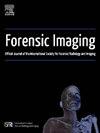Correlation between epicardial fat volume and postmortem radiological and autopsy findings in cases of sudden death: A pilot study
IF 1
Q4 RADIOLOGY, NUCLEAR MEDICINE & MEDICAL IMAGING
引用次数: 0
Abstract
Epicardial fat volume (EFV) has recently been recognized as a good predictor of multivessel coronary artery disease, and the Coronary Artery Calcium Score (CACS) is a parameter that estimates the amount of calcium in the coronary tree. Both of these parameters can be assessed non-invasively by cardiac computed tomography. Previous studies have investigated a correlation between autopsy results and radiologically calculated EFV and CACS.
The present study aims to investigate a correlation between EFV and other radiological (CACS and the presence of coronary artery opacification defects on Multi-Phase Post-Mortem Computed Tomography Angiography (MPMCTA)) and autoptic (presence of coronary stenosis) findings, in order to verify whether EFV can be considered a good predictor of radiological and autoptic coronary findings.
A cohort of 21 subjects who died suddenly was examined. Firstly, MPMCTA was performed, then autopsy was carried out. EFV and CACS were radiologically calculated, the detection of opacification defects on MPMCTA was investigated and the presence of coronary stenoses on autopsy was assessed.
21 deceased individuals (51 ± 10,77 years; 19 men) were evaluated. Statistically significant correlations were found between levels of EFV > 125 mL (cut-off indicated for prognostic risk stratification) and CACS > 0 (signifying the presence of coronary calcifications), opacification defects on MPMCTA, and coronary stenosis on autopsy.
The volume of the epicardial fat, detected radiologically, is a promising additional tool in the assessment and risk stratification for sudden death. Further research is needed to better explore the application of radiologically calculated EFV in cases of sudden death.

猝死病例中心外膜脂肪体积与死后放射学和尸检结果的相关性:一项初步研究
心外膜脂肪体积(EFV)最近被认为是多支冠状动脉疾病的良好预测指标,冠状动脉钙评分(CACS)是估计冠状动脉树中钙含量的参数。这两个参数都可以通过心脏计算机断层扫描无创地评估。先前的研究调查了尸检结果与放射学计算的EFV和CACS之间的相关性。本研究旨在探讨EFV与其他影像学(CACS和多期死后计算机断层血管造影(MPMCTA)中冠状动脉混浊缺陷的存在)和自噬(冠状动脉狭窄的存在)表现之间的相关性,以验证EFV是否可以被认为是冠状动脉影像学和自噬表现的良好预测指标。研究人员对21名突然死亡的研究对象进行了调查。首先进行MPMCTA检查,然后进行尸检。影像学上计算EFV和CACS,研究MPMCTA上发现的混浊缺陷,并评估尸检时冠状动脉狭窄的存在。死亡21例(51±10.77岁);19名男性)接受评估。EFV和gt水平之间存在统计学上显著的相关性;125ml(预后危险分层临界值)和CACS;0(表示存在冠状动脉钙化),MPMCTA显示不透明缺陷,尸检显示冠状动脉狭窄。心外膜脂肪的体积,放射检测,是一个很有前途的额外工具,在猝死的评估和风险分层。放射学计算EFV在猝死病例中的应用有待进一步研究。
本文章由计算机程序翻译,如有差异,请以英文原文为准。
求助全文
约1分钟内获得全文
求助全文
来源期刊

Forensic Imaging
RADIOLOGY, NUCLEAR MEDICINE & MEDICAL IMAGING-
CiteScore
2.20
自引率
27.30%
发文量
39
 求助内容:
求助内容: 应助结果提醒方式:
应助结果提醒方式:


